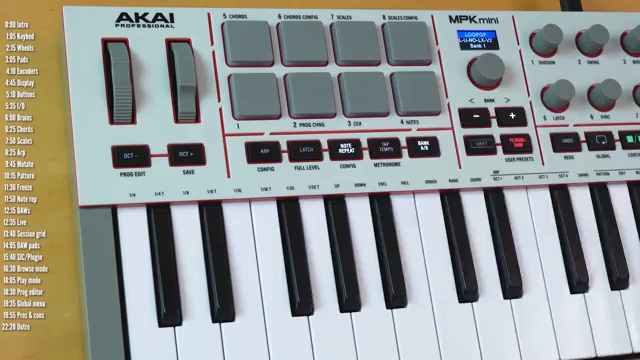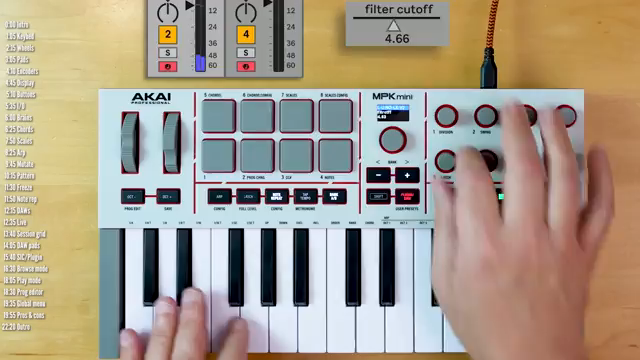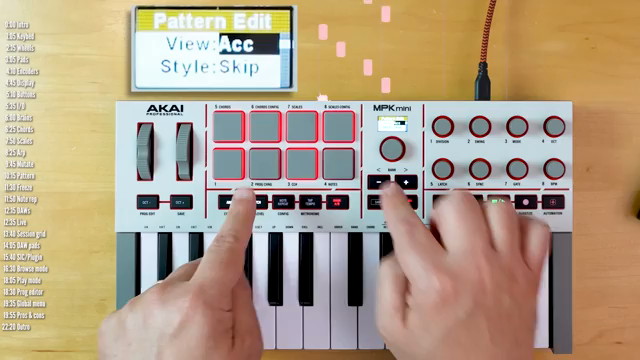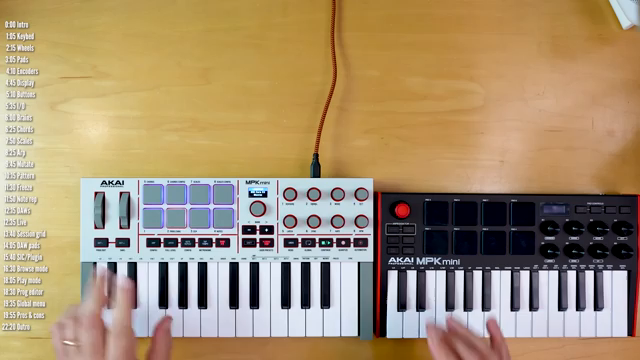Loopop takes us on a wild ride through the MIDI controller jungle, comparing the Akai MPK Mini MK4 with its predecessors and a few competitors. Ever wondered what sets these controllers apart or which one’s right for you? With Loopop’s sharp insights and tips, you’ll be ready to make beats on a budget and rock your street corner gigs. Dive in to find out more!

15. October 2025
RILEY
Loopop’s Groove: Comparing Akai and Arturia MIDI Controllers
Akai MPK Mini MK3, Akai MPK Mini MK4, Launchkey 4, Minilab 3
A New Player in the MIDI Arena
Loopop kicks things off by diving into the changes we’ve seen in budget MIDI controllers. Once upon a time, these bad boys were just basic and underpowered, but in 2023? They’ve leveled up. The new Akai MPK Mini MK4 is the star of the show, and Loopop uses it as a jumping-off point to compare it to the older MK3 and some other contenders like the LaunchKey and Minilab. He highlights the improved hardware quality, better features, and seamless DAW compatibility these new models bring to the table. If you’re on the lookout for a new addition to your beatmaking arsenal, this video is your checklist!

"The trigger for making this video is the new MPK Mini MK4."
Keys, Wheels, and Where They Take You

"I don't use these much, but when I do, I prefer real wheels to touch strips."
Loopop gets into the nitty-gritty with the keybeds of these controllers. Comparing the MK3 and the MK4, he notes the MK4’s keys are deeper and wider, offering a better play experience for those without small hands. For wheel lovers, he points out that while small, real mod and pitch wheels beat the pants off touch strips for control. He critiques the MK3 joystick for trying to do too much, unless you’re maybe flying a virtual helicopter. The MK4’s wheels stay put, unlike those tricky touch strips you might mess with accidentally. For pad aficionados, the MK4 has slightly smaller pads than the MK3 but hit that sweet size between the Minilab and LaunchKey. Those interested in expressive melodic play will appreciate the MK4’s velocity and pressure-sensitive pads, which open up a world of dynamic playing.
Round and Round with Endless Encoders
As Loopop walks us through the rest of the controller’s physical side, he shines a light on the MK4’s endless encoders, which he sees as an upgrade from the MK3. Their new layout avoids those awkward finger-touches that happen when space is tight. He compares them to the Minilab’s encoders and four faders, noting that while both are solid options, the MK4’s are great for those who like a laid-back, smooth turn. There’s a bit of sass when he talks about the color screen—small but sharp and much improved from the MK3’s display. It’s all about controlling your music with more visibility and style, even if it’s not the biggest screen in the world.
Brains of the Operation: Chords, Scales, and Arpeggiators
Diving into the software capabilities of the MK4, Loopop makes it clear that this controller isn’t just a pretty face. He explains the chord mode, where each key triggers a chord for some easy harmonic flair, although you can’t program custom chords. Still, the transposing options and various scales mean you can play like a seasoned pro without hitting a single wrong note. Then he shows us the MPK Mini’s unique arpeggiator and its mutate and rhythmic pattern modes. Loopop notes that unlike some stiff arps, the MK4’s delivers innovation with features like accent modes, rests, and sustain steps. Plus, the fun freeze mode lets you lock in your rhythm and jam over it, which he clearly enjoys. It’s more than just messing around with notes—it’s about making them your own groove.

"That's the simplest one. Turning mutate on will transpose an octave based on a certain probability."
All About That DAW Integration
If you’re all about that DAW life, Loopop breaks down the MK4’s integration with various software like Logic, FL Studio, Bitwig, Cubase, and especially Ableton Live. He details how you can control transport functions, automate with ease, and navigate through tracks like a boss. The clip and scene launching features make it a live performer’s ally, though he admits the 4×4 view can be a pinch. Loopop appreciates how many essential functions are just a button push away, and the colored screen keeps it all cool. It’s like DJing with a well-placed mirror ball—everything’s clear, sharp, and effortlessly stylish.
Exploring Akai's Studio Instrument Collection
Loopop hits a high note when he talks about the Studio Instrument Collection (SIC) that comes bundled with the MK4. It’s like having a mini music store right on your keyboard with over a thousand presets. There’s a bit of that sweet analog taste without diving deep into plugin interfaces, and the macros provide enough wiggle room to tweak your sounds just right. Loopop equates the SIC to Arturia’s Analog Lab but with that distinct Akai flavor—accessible, but deliciously varied. It’s a smart move for anyone wanting to expand their sound bank without breaking the bank.
Final Beats: Weighing the Pros and Cons

"The MK3 was starting to get long in the tooth compared to the new competition."
In the home stretch, Loopop wraps up the MK4 showdown with a clean comparison. He appreciates the MK4’s modern features like a sharp screen, a tight DAW integration, and solid controls. But he candidly dishes out on the lack of 16 pads and a sequencer, which might give some of us pause if extensive beat programming is our game. Still, he acknowledges the MK4 holds its ground against its competitors, with everything you’d need to start laying down tracks without a hitch. It’s that classic Loopop vibe—informative, cheeky, and street-ready. Whether you’re jamming in the studio or gigging at your cousin’s basement party, this review breaks down if this controller will keep up with your creative whims!
Latest articles
Watch on YouTube:
https://www.youtube.com/loopop
Links from loopop:
Sponsored links:
If you purchase via these links, we may earn a small commission – at no extra cost to you.
🔗 Check price on Amazon
🔗 Check price on Amazon
🔗 Check price on Amazon